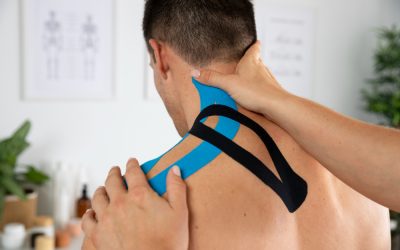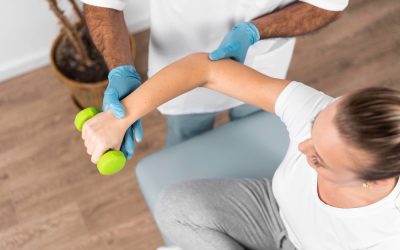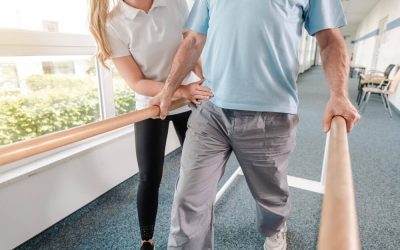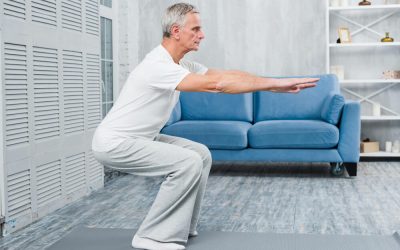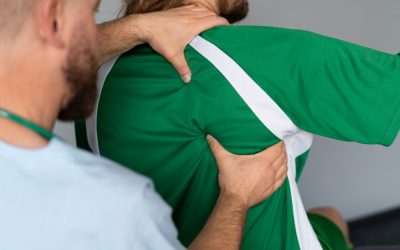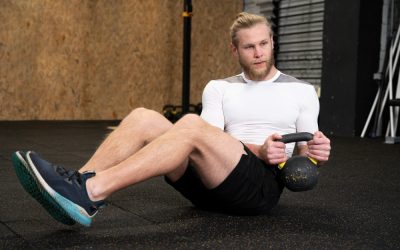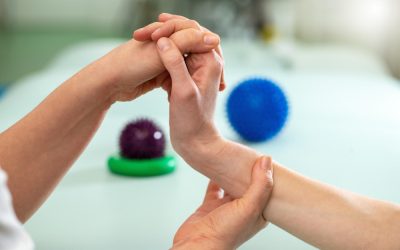Physical Therapy Blog
Activity First Physical Therapy Puts Our Patients FirstActivity First PT Patient Safety Measures
Coronavirus (COVID-19): Activity First PT Patient Safety Measures Our top priority is ensuring a safe environment for our patients and staff. We are closely monitoring the CDC and Department of Health reports on the Coronavirus (Covid-19). Activity First PT has always...
Why Physical Therapy Is a Crucial Part of the Healing Process After Shoulder Surgery
Shoulder surgery is often necessary to repair injuries like rotator cuff tears, labral damage, or joint instability. While the procedure itself is a vital step toward recovery, it’s only part of the healing journey. Regaining strength, flexibility, and full function...
The Benefits of Physical Therapy After a Long Hospital Stay
Spending an extended period in the hospital - whether due to illness, surgery, or injury - can take a toll on your body. Prolonged bed rest or limited movement often leads to muscle weakness, stiffness, fatigue - and even difficulty with basic tasks like walking,...
Recovering from Muscle Strains – Why Physical Therapy Speeds Up Healing
Muscle strains are common injuries that can happen to anyone - whether you’re an athlete, a weekend warrior, or simply lifting something the wrong way. While some mild strains heal with rest, more significant injuries can lead to lingering pain, reduced mobility, and...
How StemWave Supports Recovery from Sports and Overuse Injuries
Sports and physical activity offer countless benefits for health and well-being, but they also come with the risk of injury. Whether you're a competitive athlete or someone who enjoys staying active - overuse injuries like tendonitis, muscle strains, and joint pain...
Here’s How Physical Therapy Can Help Improve Circulation Naturally
Good circulation is essential for overall health. It ensures that oxygen and nutrients are delivered to muscles and tissues while helping remove waste products from the body. When circulation is poor, you may experience symptoms like cold hands and feet, muscle...
Return To Work Confidently – How Physical Therapy Can Help
Recovering from an injury isn’t just about healing - it’s about getting back to your life. For many people, that includes returning to work. Whether your job is physically demanding or involves long hours at a desk, an injury can affect your ability to perform routine...
Safe Weight Loss and Physical Activity Through Physical Therapy
Losing weight and becoming more physically active are important goals for many people, but they can be challenging - especially if you’re dealing with pain, joint issues, or a history of injury. Starting or restarting an exercise routine without the right guidance can...
How Physical Therapy Helps After a Slip and Fall Injury
Slip and fall injuries can happen in an instant - but their effects can linger for weeks, months, or even longer if not properly treated. Whether it’s a sprained wrist from breaking your fall, a bruised hip, or lingering back pain - these injuries can impact your...
Why Balance Training Matters – Even If You’re Not an Athlete
When most people think about balance training, they picture athletes working on agility drills or stability exercises to improve performance. But balance isn’t just important for sports - it’s essential for everyday life. From walking up stairs to reaching for...
Why More Patients Are Choosing StemWave to Manage Their Pain
Managing chronic or recurring pain can be a frustrating journey. Many patients are looking for alternatives to surgery, long-term medications, or invasive treatments that come with side effects or extended recovery times. That’s why more people are turning to...
The Role of Physical Therapy in Recovering from a Sprained Wrist
A sprained wrist can happen quickly. While often viewed as a minor injury, a wrist sprain can significantly impact your ability to perform everyday tasks like typing, lifting objects, or even turning a doorknob. Proper treatment is key to avoiding long-term stiffness...
How Physical Therapy Can Help Desk Workers Prevent and Manage Pain
Sitting at a desk for hours each day may seem harmless, but over time it can lead to a variety of aches and pains. Many desk workers experience discomfort in their neck, shoulders, back, and wrists due to poor posture, repetitive movements, and a lack of regular...
How Physical Therapy Helps Improve Sleep Quality
Getting a good night’s sleep is essential for overall health, but many people struggle with this due to pain, discomfort, or mobility issues. Chronic pain, poor posture, and muscle tension can make it difficult to relax, leading to interrupted or poor-quality sleep....
The Connection Between Foot Health and Overall Mobility – How Physical Therapy Can Help
Your feet serve as the foundation of your body’s movement, supporting your weight and allowing you to walk, run, and stand. When foot health is compromised due to pain, injury, or poor mechanics - it can affect balance, posture, and overall mobility. Many people don’t...
Recovering from a Rotator Cuff Injury: How Physical Therapy Can Help
A rotator cuff injury can make even the simplest tasks - like reaching for a shelf, lifting a bag, or putting on a jacket - painful and difficult. The rotator cuff is a group of muscles and tendons that stabilize the shoulder, and when injured, it can lead to...
How Physical Therapy Supports Recovery from Whiplash Injuries
Whiplash is a common injury, often caused by car accidents, falls, or sports-related impacts. It occurs when the head is suddenly forced forward and then backward - straining the muscles, ligaments, and joints in the neck. While some cases of whiplash improve on their...
The Connection Between Core Strength and Pain-Free Movement
When people think of core strength, they often picture six-pack abs or intense workout routines. However, the core is much more than just the abdominal muscles and it plays a crucial role in maintaining balance, supporting posture, and preventing pain. Weak core...
Regaining Hand Strength and Dexterity with Physical Therapy
Our hands play a crucial role in daily life, from typing on a keyboard to opening jars and gripping objects. When an injury, surgery, or condition like arthritis affects hand strength and dexterity - even the simplest tasks can become frustrating. Fortunately,...


